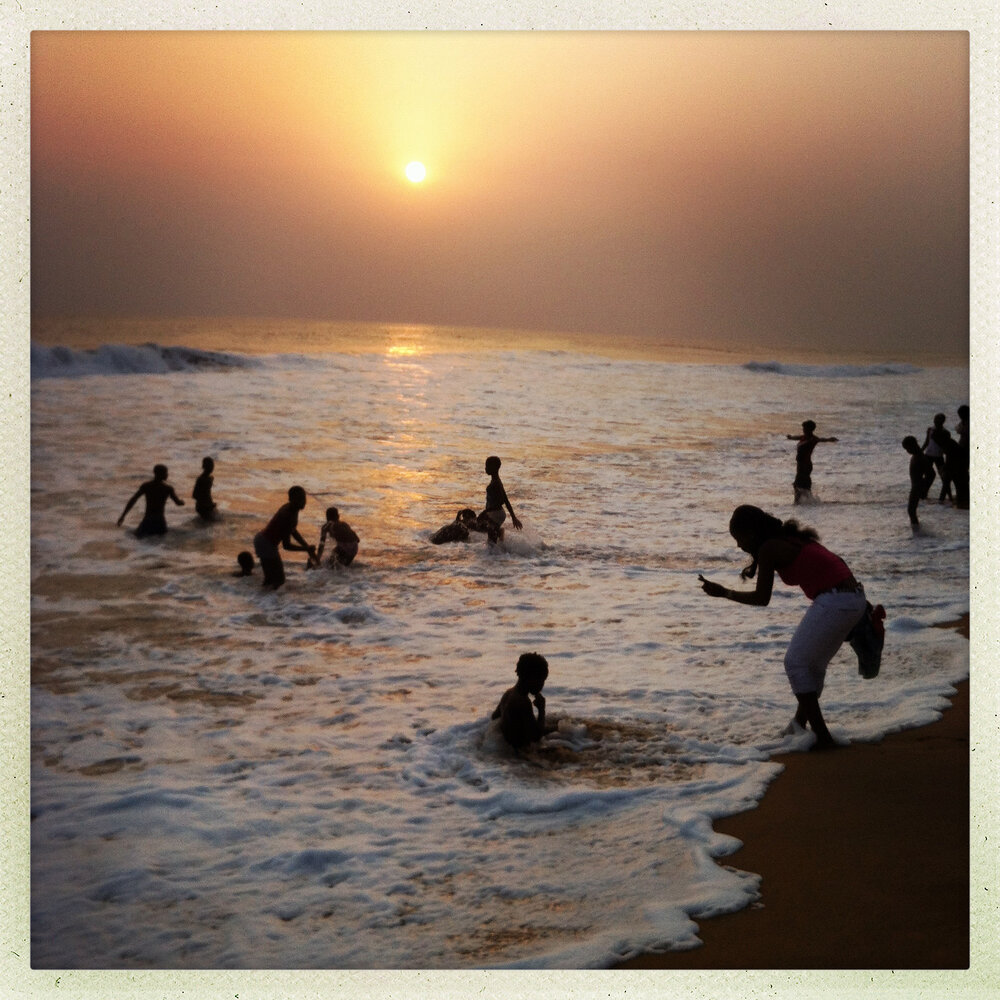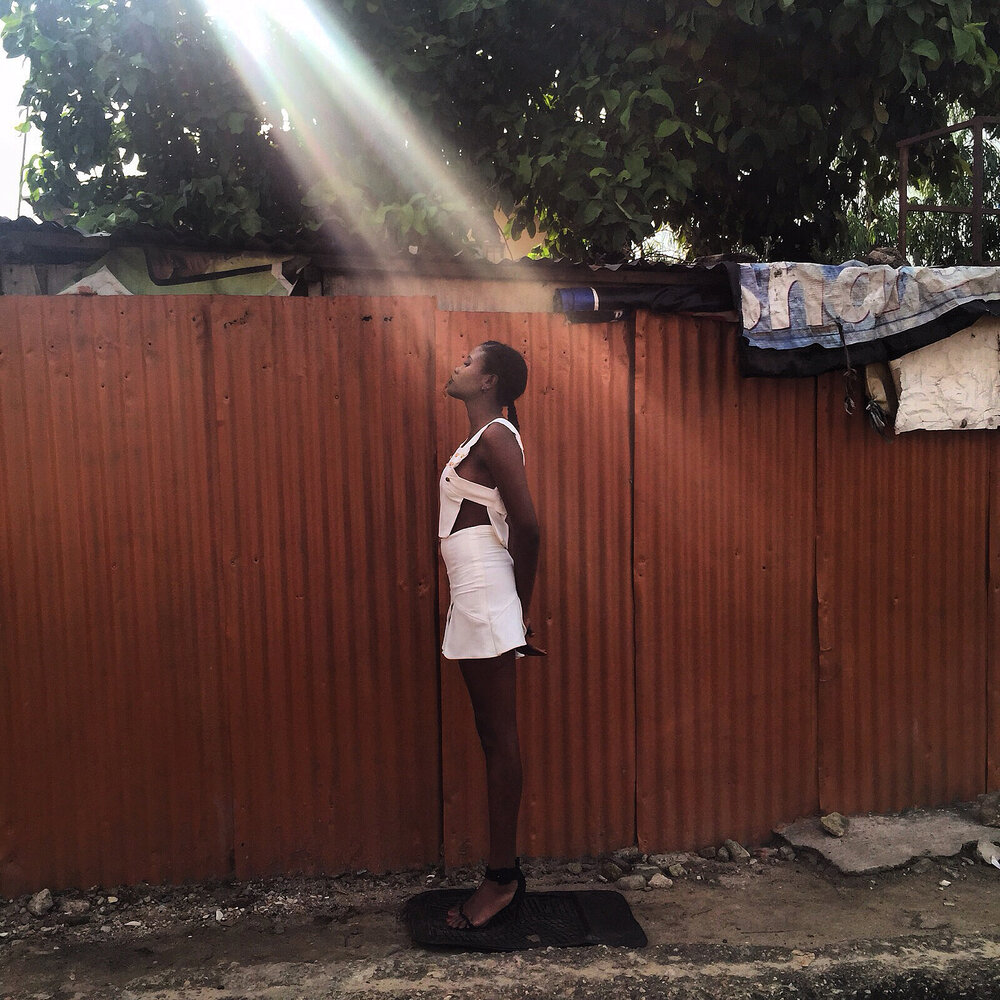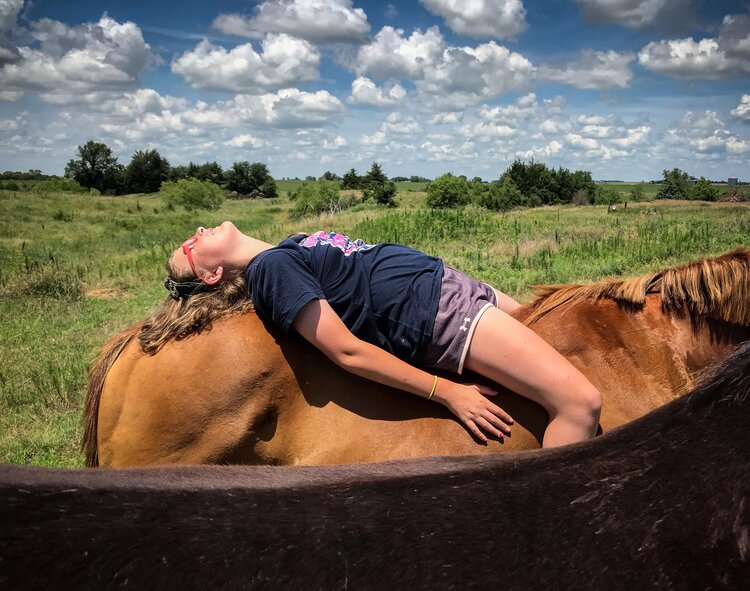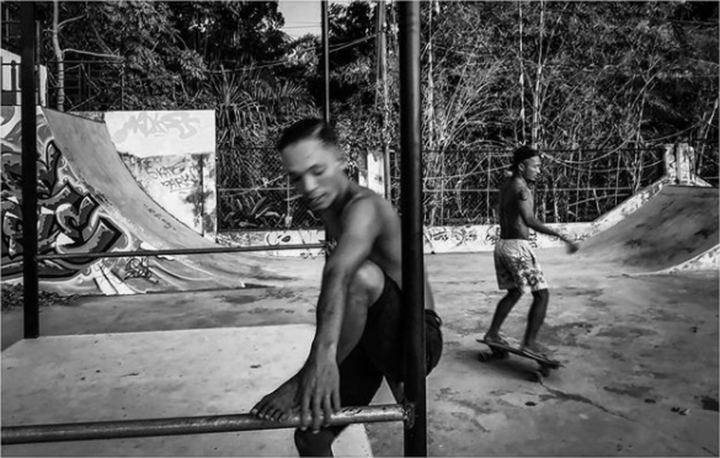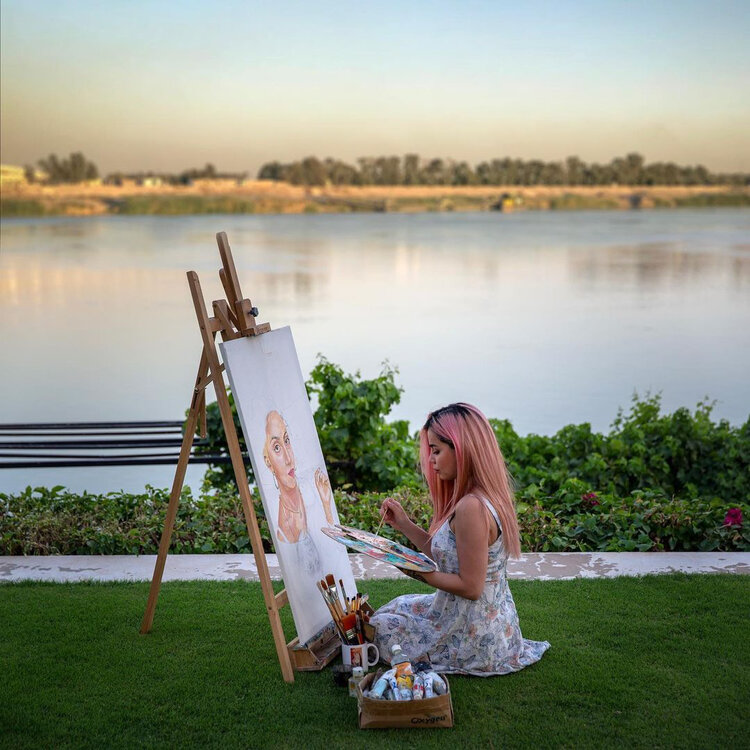3. Now reveal the captions of the two photos. You’ll use these two examples to walk the students through the most important pieces of information that are provided by a good caption: who, what, where, when, and why – the 5 Ws.
Ask:
Who is in the photo?
What are they doing?
Where was the photo made?
When was the photo made?
Why did the photographer make the photo? Why is this situation important, newsworthy, or interesting?
Usually, the first sentence includes Who, What, Where, and When, and then a second sentence includes an optional “Why”. You can use the caption of the beach photo above as an example:
[A woman WHO] [photographs children playing in the ocean WHAT] [in Grand-Bassam, Ivory Coast WHERE], [September 2, 2013 WHEN]. [Just outside of Abidjan, Ivory Coast’s largest city, Grand-Bassam is a popular weekend destination for thousands of Ivorians WHY it matters or is interesting].
This is commonly referred to as AP Style, referring to the Associated Press, the news agency that popularized and codified this format.
Note that the “why” is optional, and that if it is included, it does not always have to be in a new sentence. Refer back to the examples above.
All of the other four elements are necessary.


